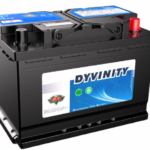Modern vehicles rely heavily on advanced engine control systems to run smoothly. One important part is the idle control system rpm higher than expected , which ensures the engine maintains a steady RPM when the car is not moving.
Sometimes, you may see the error “idle control system RPM higher than expected” appear on your dashboard or during a scan with an OBD-II tool. This issue can trigger the check engine light and leave many drivers wondering what’s wrong.
In this article, we’ll break down what this warning means, why it happens, the common symptoms, and how you can fix it.
What Does Idle Control System RPM Higher Than Expected Mean?
When your car is idling, the Idle Air Control (IAC) system or electronic throttle body regulates airflow to keep RPM stable. Typically, idle speed ranges from 600 to 1,000 RPM.
If the ECM (Engine Control Module) detects the idle RPM is above the normal limit, it triggers the warning. The most common code linked with this problem is P0507.
In simple terms, this means your engine is revving higher than it should when the car is not moving.
Common Causes of Idle RPM Being Higher Than Expected
Several issues can lead to this error. The most common include:
- Vacuum Leaks – Cracked or disconnected hoses allow extra air into the engine.
- Dirty or Faulty Throttle Body – Carbon buildup or actuator issues affect airflow.
- Bad Idle Air Control Valve (IACV) – A stuck-open valve lets in too much air.
- Leaking Intake Manifold Gasket – Causes unmetered air to enter the system.
- Faulty Mass Air Flow (MAF) Sensor – Incorrect airflow data confuses the ECM.
- PCV Valve Problems – A stuck-open PCV valve increases idle RPM.
- ECM or Software Issues – Rarely, a calibration error may cause mismanagement.
Symptoms of Idle Control System RPM Higher Than Expected
If your car’s idle RPM is too high, you may notice:
- Check engine light with code P0507
- Engine idling above 1,200–2,000 RPM
- Loud engine noise when parked
- Increased fuel consumption
- Rough or hard gear shifts in automatic vehicles
- Engine revs on its own while in neutral
How to Diagnose the Problem
Here’s how you can track down the issue:
- Scan for Trouble Codes
- Use an OBD-II scanner to read stored codes.
- P0507 often appears along with related codes like P0101 (MAF) or P0171 (lean condition).
- Check for Vacuum Leaks
- Listen for hissing sounds around hoses and the intake manifold.
- Spray carb cleaner around connections; if RPM changes, you’ve found a leak.
- Inspect the Throttle Body
- Look for carbon buildup.
- Clean it with throttle body cleaner.
- Test the Idle Air Control Valve
- Check resistance with a multimeter.
- Look for sticking or dirt buildup.
- Examine Sensors
- Test the MAF and Throttle Position Sensor (TPS) for accurate readings.
Fixes for Idle Control System RPM Higher Than Expected
Depending on the root cause, you can try these solutions:
- Clean the Throttle Body – Removes carbon deposits and improves airflow.
- Repair Vacuum Leaks – Replace cracked or loose hoses.
- Replace Idle Air Control Valve – If faulty, swap it with a new one.
- Fix or Replace PCV Valve – A cheap and effective repair.
- Replace Sensors – Install a new MAF or TPS if they’re giving false readings.
- ECM Update or Reset – Rarely needed, but dealers can reflash ECM software.
Preventive Maintenance Tips
To prevent future idle RPM issues:
- Clean your throttle body every 20,000–30,000 miles
- Inspect and replace vacuum hoses regularly
- Change the PCV valve at manufacturer-recommended intervals
- Keep your air filter clean to protect sensors
- Run periodic OBD-II scans to catch issues early
Repair Costs
Here’s what you can expect to pay for repairs:
- Throttle body cleaning: $50–$150
- Idle Air Control Valve replacement: $120–$400
- Vacuum hose repair: $20–$200
- PCV valve replacement: $30–$80
- MAF sensor replacement: $150–$300
DIY fixes can save money if you’re comfortable working on your car.
Final Verdict
The idle control system RPM higher than expected warning may look worrying, but in most cases, it’s caused by straightforward issues like vacuum leaks, dirty throttle bodies, or a faulty IAC valve.
With the right diagnostic steps, you can identify the problem quickly and apply the correct fix. Keeping up with preventive maintenance will also help you avoid the same issue in the future.
If your car shows this warning, don’t ignore it. A high idle can increase fuel usage, wear out components, and affect your driving comfort. Take action early, and your vehicle will reward you with smoother performance and better efficiency.






